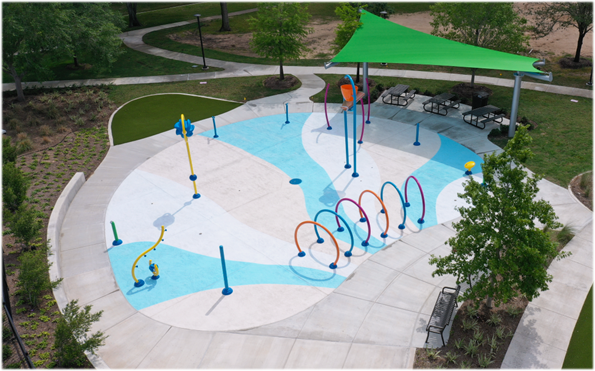Emergency Preparedness Planning
Are You Prepared?
If you have lived in the greater Houston area for any length of time you know the question on everyone’s mind isn’t if a catastrophic event will occur, but when will it occur? Whether it is flooding like we have seen in the recent years or a hurricane or tropical storm, emergency preparedness isn’t just smart planning, it is a necessity.
It only takes one catastrophic event impacting the Houston area to cause damage to your home or business. Harris County Municipal Utility District No. 71 (HCMUD71 or District) wants to help our community plan and prepare for the unexpected by providing you with information and useful resources that can assist you in your efforts. On the District’s website you will find numerous links to emergency preparedness websites and helpful phone numbers that will help you not only plan for an event, but help you stay abreast of the event as it unfolds.
So please visit our website at https://hcmud71.com/ and let us help you stay safe and prepared. Also visit https://member.everbridge.net/index/892807736729064#/signup to sign up for emergency alerts and learn more about emergency preparedness from Harris County.
August and September are peak months of hurricane season, which officially lasts from June 1st to November 30th annually.
Emergency Preparedness Resources
Harris County Regional Joint Information Center – Register for Local Weather Alerts
Harris County Flood Control District Storm Center – Flood Preparedness Planning
Harris County Flood Warning System – Rainfall Totals
Houston TranStar – Traffic Information
Harris County Flood Control District – Bayous and Creek Levels
Find My Towed Car – Locating a Vehicle after a Flood
National Flood Insurance Program
National Weather Service Hurricane Tracking Center
Creating an Emergency Plan for Yourself and Your Family
An involved community is a prepared community, but knowing what to do during a catastrophic event is not only your best protection but also your responsibility. No matter what type of event occurs, it is prudent to assume that basic services such as water, electricity, phones, and gas may be disrupted for a period of time. Generally, these services are restored first to facilities that during a disaster assist in providing emergency and basic services to the public, such as hospitals, water plants, fire stations, etc.
To best survive a disaster, you should create a plan that includes:
- Informing yourself as to the types of catastrophic events that could affect you, your family and property in the area in which you live.
- Teaching members of the family basic safety skills such as CPR, first aid; make sure you have a working fire extinguisher on hand and know how to use it.
- Find the safest room in your home, which may vary depending on the type of event about to occur.
- Make sure you have emergency numbers and website links handy and stored in multiple locations. Everyone in the family should know how to dial 911.
- Know how to turn off utilities to your home, such as gas, electricity and water valves, and switches.
- Have important documents located and stored in watertight bags within a fireproof safe. Consider scanning all your important documents and keeping them on a USB flash drive or another secure location other than at their primary storage location.
- Determine how your family will communicate, if separated, during different types of emergencies.
- Have a plan for evacuating your home in case of a fire, practice day and nighttime fire drills. Take into consideration supplies needed for multi-story residences.
- And just as important, how to care for our furry friends, and other pets, their needs matter too!
Creating Your Disaster Supply Kit
One important part of emergency preparedness planning is assembling your disaster supply kit. Get ready now, because many essentials may be unavailable or inaccessible when disaster strikes! Although everyone’s needs may be different, below you’ll find a sample disaster supply kit checklist that will help give you an idea of the items you may want to have on hand when an emergency situation, such as a hurricane or flood, occurs. Be ready, stay safe.
 Disaster Supply Kit Sample Check List
Disaster Supply Kit Sample Check List
- Water – Five-day supply (one gallon per person per day)
- Food – Five-day supply of non-perishable, canned or freeze dried (make sure you have a non-electric can opener)
- Special dietary needs
- First aid kit
- Prescription medications
- Sanitation and personal hygiene items
- Change of clothing and sturdy, closed toe shoes
- Sleeping supplies – Blankets, bedding or sleeping bags, pillows
- Battery powered radio, weather radio, car or battery chargers for mobile devices, flashlights and plenty of extra batteries
- Tools and supplies
- Extra set of car keys
- Cash and credit cards
- Important family documents – Birth certificates, social security cards, insurance policy, etc.
- Pet supplies – food, water, medicine, leash and kennel or crate


